One of the lesser known storylines of Olga Korbu’s career is the rumor that she was nearly left off the 1972 Olympic team. It is one of the more debated moments in gymnastics history and presents one of the most compelling “what if” scenarios in sports history. Olga Korbut’s appearance at the 1972 Munich Olympics changed the course of gymnastics history, and there is speculation that it almost didn’t happen.
The most important detail in the early stages of Olga Korbut’s career is her association with the gymnastics club SKA-Grodno. During the 1960s SKA-Grodno was at the height of its power and had a proven track record of success. But what made SKA-Grodno one of the most admired and respected clubs of the era was its track record for innovation.
In an era where women’s artistic gymnastics (WAG) was dominated by women in their late 20s/early 30s, SKA-Grodno understood before anyone else that the future of the sport was young child prodigies. SKA-Grodno was the first high level club to make this pivot and find success with it. But its other significant innovation was SKA-Grodno’s track record of producing daredevil tricksters.
SKA-Grodno was also one of the early clubs to pioneer the newfound emphasis on acrobatic skills and the massive influx of difficulty overtaking the sport starting in the mid-1960s. SKA-Grodno gymnasts weren’t just talented, but were exciting to watch. By the late 1960s all eyes were on SKA-Grodno as Soviet gymnastics fans were eagerly awaiting for the next renowned young gymnast this club was going to produce.
Note #1: SKA-Grondo’s high status was due to Renald Knysh who was the top coach at the club. He would later be linked to allegations of serial sexual abuse involving underage gymnasts. Allegations involving Renald Knysh are so gut wrenching that I consider them the most disturbing accounts of abuse I have ever read regarding a WAG abuse scandal. In its heyday SKA-Grodno was one of the strongest clubs in the sport. But it should be remembered for its notoriety. Furthermore, readers should ponder the significance of the very club which pioneered the introduction of child gymnasts into elite WAG being linked to allegations of sexual abuse.
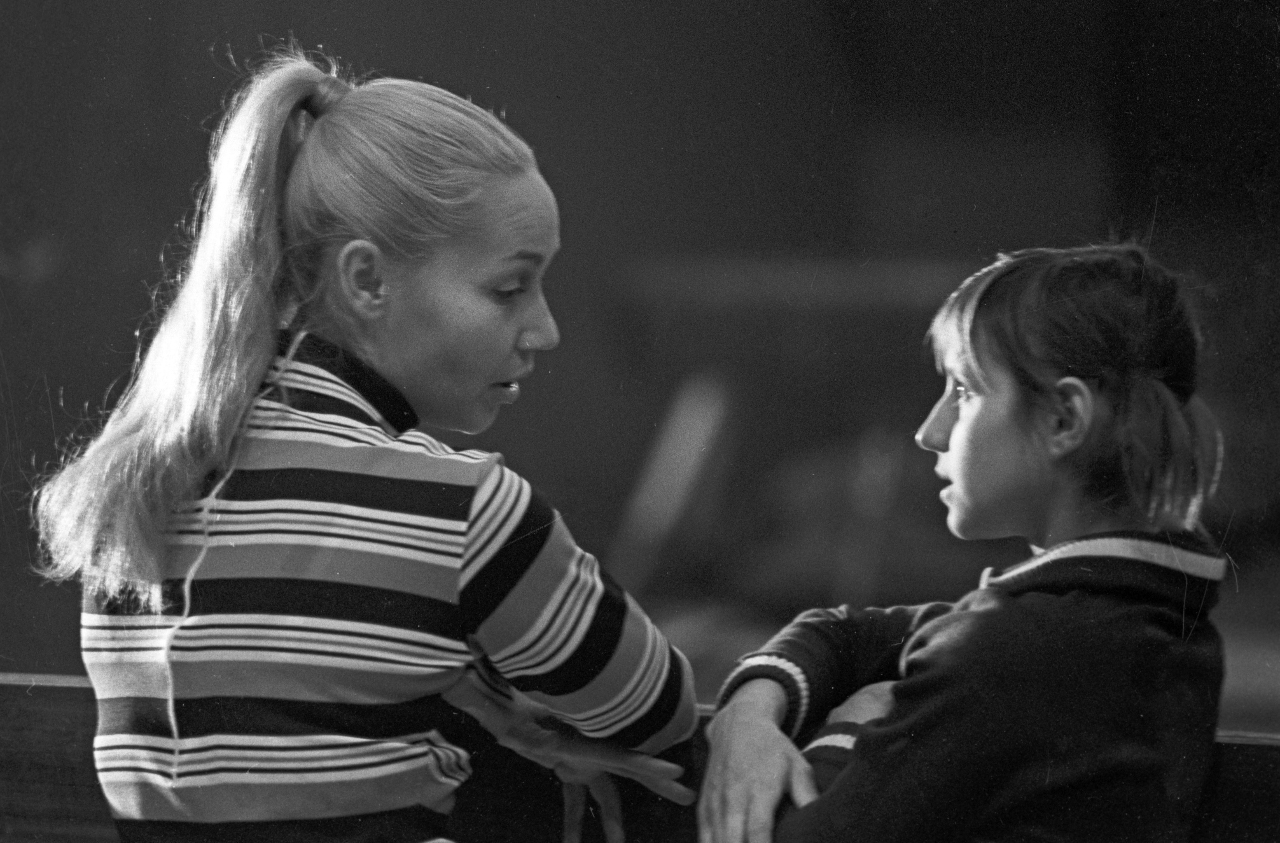
Due to her association with a high-octane club, Olga Korbut had instant credibility from the moment she walked into the competition hall. To provide a modern comparison, being SKA-Grondo’s top junior prospect in 1969 was comparable to being a top junior prospect from WOGA immediately following the 2008 Olympics. In 1969 Olga Korbut was 14 years old and too young for senior competition. Despite this the Soviets made an exception and allowed Korbut to compete in the senior division at the 1969 USSR Championships.
Contrary to a popularized narrative that Korbut was a gymnast that had gone unappreciated and undervalued prior to her unexpected streak of success at the 1972 Olympics, in actuality the exact opposite is true. Olga Korbut was seen as a child prodigy from the start and the Soviets specifically sought out ways to give her preferable treatment.
Olga Korbut quickly proved her inclusion at the 1969 USSR Championships was justified with a 5th place finish in the all-around. But the bigger story was how Korbut’s debut had been received. Spectators “gasped” and “groaned” as they watched Korbut’s routines with bewilderment and gave thunderous applause as each routine came to an end.
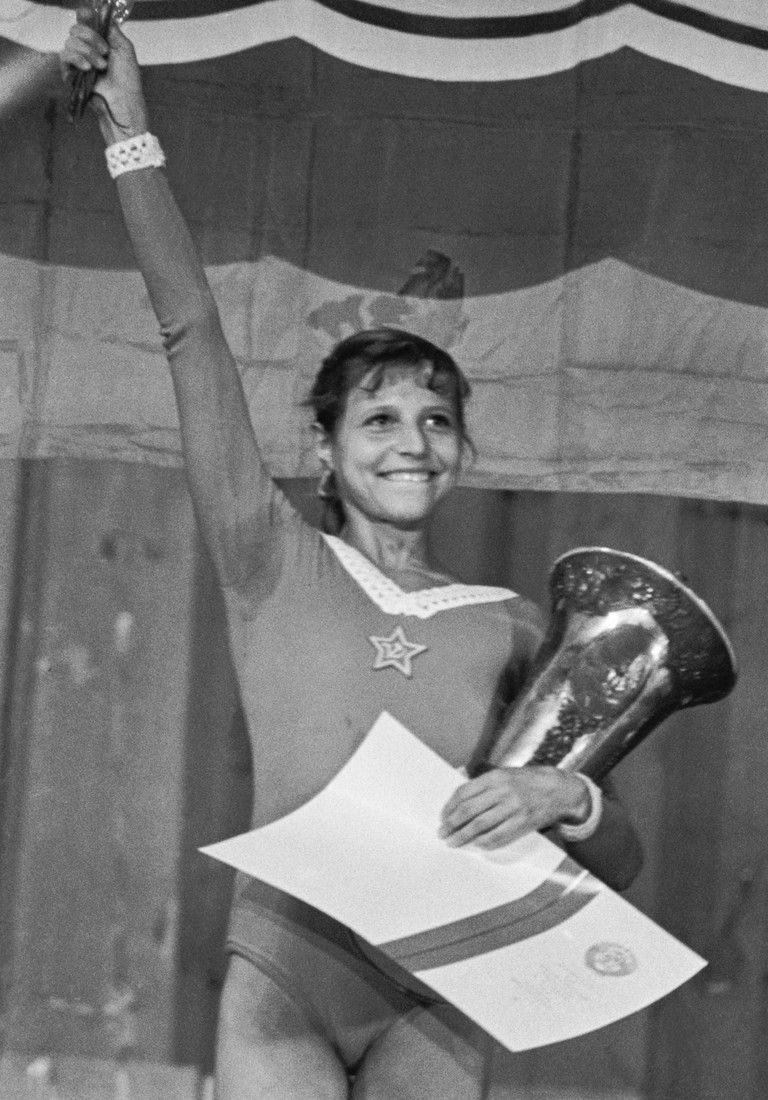
Minot Simons II who I consider the best there is when it comes to documenting WAG history said Korbut’s performance in 1969 “had the same effect upon the Soviet people as it did in Munich three and a half years later.”
The following year Olga Korbut attended the 1970 World Championships as the Soviet alternate. Even though Korbut was not able to compete, it was still a highly prestigious assignment. It allowed Korbut to get accustomed to a World Championships/Olympic environment. It also allowed Olga Korbut to compete in podium training and gain international recognition for herself.
During the 1960s and early 1970s era of Soviet WAG, whenever the alternate role fell to a young gymnast, it was usually a sign the Soviets were expecting to send this gymnast to the upcoming Olympic Games. By earning the alternate role in 1970, it was a strong signal that Olga Korbut was one of the favorites for a spot on the 1972 team.
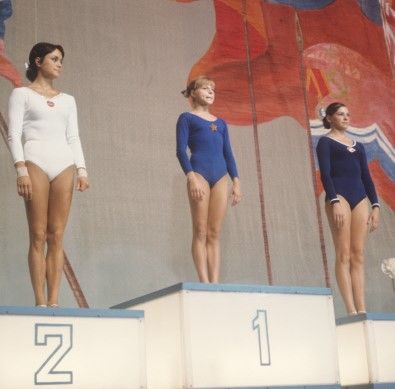
There was no World Championships held in 1971, had there been one Korbut most likely would have made the starting six-person lineup. Instead there was only a European Championships with only two gymnasts allowed per country. At the time the Soviet Union had Tamara Lazakovich and Ludmilla Turischeva. And in 1971 they were the two best gymnasts in the world.
It didn’t matter how good Olga Korbut was. She could have been the third best gymnast in the world that year and Korbut still wouldn’t have been able to compete. In Korbut’s absence Turischeva and Lazakovich battled each other to an even draw. They shared the All-Around (AA) title in a tie and then proceeded to win every gold and silver medal in Event Finals.
In a stroke of good fortune, the 1971 European Championships were held in the Soviet city of Minsk, which was the capital of Soviet-Belarus. As a Belarusian-Soviet gymnast, this placed the 1971 European Championships right in Olga Korbut’s backyard. As a result, Olga Korbut had been invited to appear at the 1971 European Championships to perform exhibition routines in front of international observers.

The following year in 1972 Olga Korbut would finally get her chance, and just in time for the upcoming Olympics. By this point the Soviets had identified Olga Korbut as a child prodigy, and had spent years prime-positioning* her for the Olympics. In 1972 with the Munich Olympics rapidly approaching, years of preparation finally began to pay off in the form of raw results.
Note #2: I use the term “prime-positioning” in lieu of “grooming” which has been used as an athletic term, but has since evolved to become a term that also deals with sexual assault. I don’t want to create such confusion.
Predictably, Turischeva (1st) and Lazakovich (2nd) recorded the two highest scores at the 1972 USSR Championships. Not only were they the two best gymnasts of 1971, but they would prove to be particularly strong at the 1972 Munich Olympics. Turischeva would eventually win the Olympic AA title under carryover scoring whereas Lazakovich would have won the Olympic AA title had new life scoring been used. But coming up right behind them at the 1972 USSR Championships was Olga Korbut in 3rd place.
That was in March of 1972. Six weeks later there was a tri-meet between West Germany, Canada, and the Soviet Union. Both Olga Korbut and Ludmilla Turischeva were in attendance, and it was Korbut who won the AA portion of the tri-meet. As part of its Canadian coverage, International Gymnast which was named “Gymnast” back then had covered the meet. The competition report featured the following excerpt:
The latest marvel on the gymnastics scene won the all around achieving 9.9’s and 9.8’s without much problem. Her name name is Olga Korbet, 17 years old and looks like 10 year old dynamite.
While International Gymnast hadn’t learned the correct spelling of Korbut’s name, they had realized that this was someone important and worth paying attention to. This competition report predates the 1972 Olympics and demonstrates Korbut was being noticed even outside of Europe prior to Munich. The next step for Olga Korbut was to prove beating Turischeva at the tri-meet hadn’t been a fluke.
In the Soviet WAG program the USSR Cup was something of an unofficial Olympic trials. It was the last major competition prior to the selection of the Soviet team and a competition officials would weigh heavily before making their final decision. Now you would think eventual 1972 Olympic AA champion Ludmilla Turischeva who was also the reigning AA Champion at both the World Championships and the European Championships would have won this competition. But nope…
…it was Olga Korbut
| Olga Korbut | 76.275 | |
| Ludmilla Turischeva | 76.125 | |
| Tamara Lazakovich | 75.900 |
This is where the notion that Olga Korbut was almost left off the 1972 Olympic team starts to fall apart. It rests on the notion that the Soviets would have left their highest scoring gymnast in domestic competition and their unofficial Olympic trials champion off the Olympic team. The USSR Cup was a strong indicator of who would make the Olympic team, but it wasn’t a guarantee.
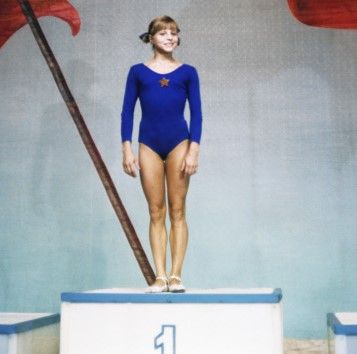
This is because the Soviets would occasionally boot the 5th or 6th best gymnast out of the lineup and replaced them with someone who had achieved a lower score. Only in extreme circumstances would the Soviets go as high as to target the 4th ranked gymnast for removal. To do it to the #1 ranked gymnast would have been madness and beyond the limits of how far the Soviets were willing to push the envelope when it came to controversial lineup decisions.
At the 1972 USSR Cup, gymnasts who finished 2nd, 3rd, 4th, 5th, and 6th were all named to the Munich Olympic team. Which provokes the question if they were all safe, how come #1 Olga Korbut wasn’t?
Entering the 1972 Olympics, Olga Korbut was a proven and highly regarded gymnast. The Soviets had spent three years providing her with every opportunity to position her for an Olympic appearance. Olga Korbut can truly be described as the golden child of Soviet WAG and someone who had been given favorable treatment on her way to Munich. Not because Korbut didn’t deserve it, but because the Soviets had come to realize that she was one of the most talented gymnasts they had in their arsenal.
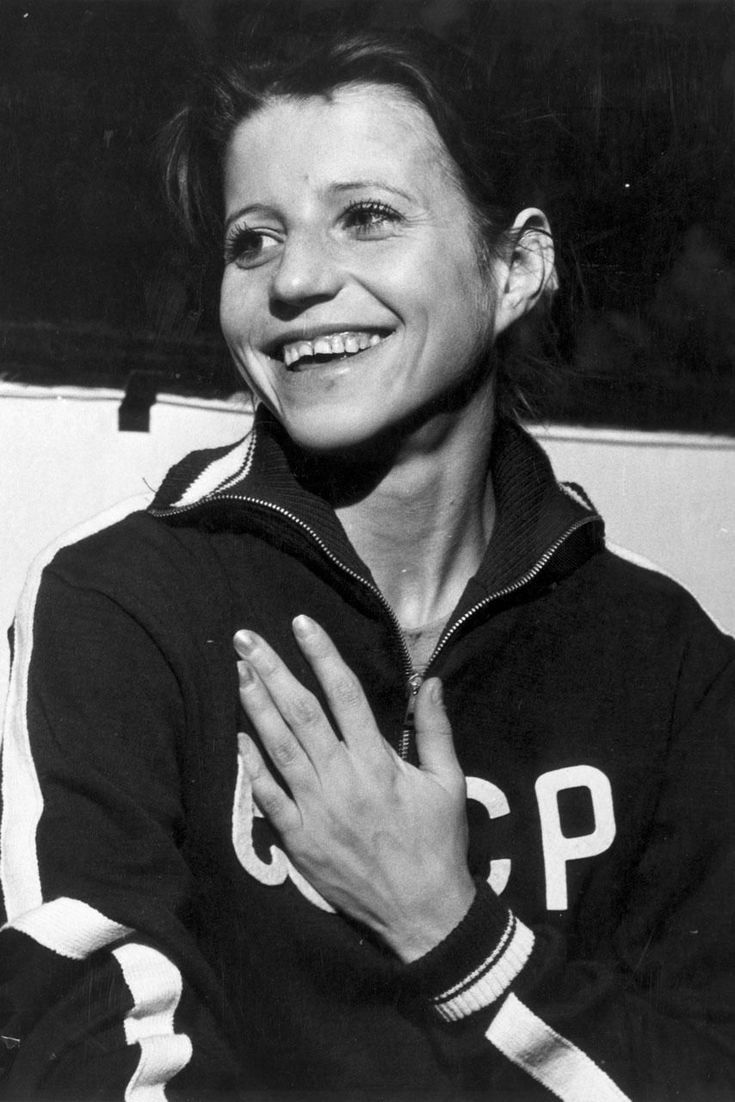
So how did this rumor even come about? Why is there a discussion that Olga Korbut had nearly been left off the Olympic team? The controversy isn’t without merit as Jim McKay the host of ABC’s Wide World of Sports for 37 years would be one of the early sources behind this claim. He served as a television broadcaster during the 1972 Olympics and won two Emmy Awards for his coverage in Munich.
In 1973 McKay published his autobiography titled My Wide World* which mentions Olga Korbut. Jim McKay describes her as a “last minute replacement” and that Korbut had been absent from the Soviet team brochure. As a result, Mckay claimed his broadcasting team had to do a “rush research job” to obtain basic information on her. McKay would claim Olga Korbut had been elevated to a full member of the team in order to replace an injured teammate.
*Special thanks to Chocdove for recommending this book, make sure to check out his YouTube channel.
There is also the following picture which among fans of Golden Era WAG, is one of the most heavily debated and over analyzed picture there is from the Cold War era.
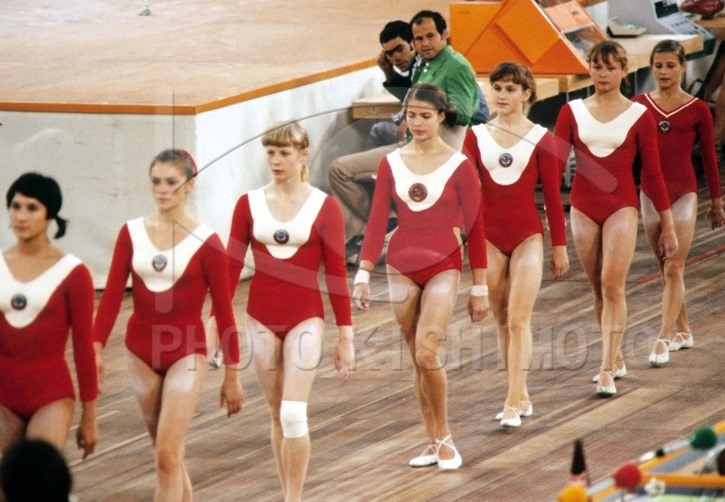
What makes this picture significant is that it features the seven members of the Soviet team during Munich podium training. For six of these gymnasts, they will earn a spot in the starting lineup and officially become Olympians. For the 7th and last remaining gymnast, she will be the alternate. Starting from the left the first five gymnasts are wearing both a team leotard and a Soviet emblem.
But the 6th gymnast, Nina Dronova is wearing the correct leotard, but is missing a Soviet emblem. Behind her is Olga Korbut who is wearing the Soviet emblem, but is missing a team leotard. In the end, Olga Korbut made the team while Nina Dronova did not. And gymnastics fans have used this picture to speculate that neither Nina Dronova nor Olga Korbut had been assigned full gear because it wasn’t until the last moment that Soviet officials would decide which gymnast would get the final spot on the Olympic team.
The last piece of evidence that the Soviets were looking to keep Olga Korbut off the Olympic team and award her spot to Nina Dronova was Nina Dronova herself. Whereas future Soviet alternates in 1976 and 1980 contributed only minor roles to the Soviet lineup, Nina Dronova was anything but. If Nina Dronova competed in Munich, it wouldn’t be as an obscure gymnast, but as one of the top contenders for an AA title.
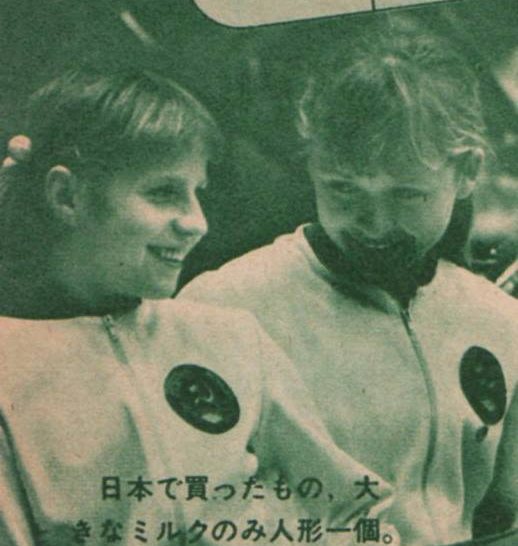
If Nadia Comaneci had the most dominant junior career of any gymnast during the Cold War, Nina Dronova had the second most dominant junior career. It is one of the great injustices in WAG history that Nina Dronova never became an Olympian. Dronova was responsible for all sorts of crazy exploits and I wrote a whole article detailing them.
The interesting dynamic between Korbut and Dronova is they were both Soviet child prodigies who came of age at the same time. Olga Korbut first emerged in the late 1960s when gymnasts usually achieved breakout success at no younger than 14 years old. Whereas Nina Dronova first emerged in the early 1970s and was the very first gymnast to make a name for herself at just 12 years old.
Because of the rapid decline in the ages of its athletes WAG was experiencing during this time, Korbut and Dronova were child prodigies who came of age at roughly the same time even though there was a 3-year age gap between them. Not only was Nina Dronova more comparable to a top AA contender than a bottom member of the Soviet team, there were other reasons for her inclusion on the Soviet team.

Most of the Olympic WAG teams in Munich had at least one 14 year old in their starting lineup. Nina Dronova was the lone 14 year old the Soviets had in Munich. By opting to place her in the alternate role, the Soviets had actually committed a statistical anomaly in the age makeup of their team by not having one ultra-young gymnast in their lineup. Four years later the USSR did exactly in 1976 what they hadn’t done in 1972. After seeing that virtually every other team had at least one 14 year old on their team, the Soviets upgraded 14 year old team alternate Maria Filatova to a full member of their starting lineup.
Finally, Nina Dronova hadn’t competed at the 1972 USSR Cup. But her previous body of work clearly indicated she was worthy of making the Soviet team. Thus, the six highest scoring gymnasts at the 1972 USSR Cup couldn’t truly be described as the six best gymnasts in the Soviet system. One of them would have had to be replaced to make room for Dronova.
The 1972 Chunichi Cup was held only a few months after the Olympics and both Nina Dronova and Ludmilla Turischeva were in attendance. Dronova would record a higher score than Turischeva which solidified her status as one of the best gymnasts of 1972. If someone on the 1972 Olympic team was going to lose her spot to Dronova, it wasn’t going to be a case of the Soviets moving their 7th best gymnast into the 6th spot.

In 2003 Olga Korbut herself spoke on this matter in an English language interview with PBS. It is not a translation but Olga doing her best to convey her thoughts in English:
And in 1972 I almost wasn’t, on the team, but I knew about it just before Olympic Games for three months before this why this is was not very good for me.
At this point there are two gymnasts named “Olga Korbut.” There is Olga Korbut the highly regarded child prodigy, reigning champion of the USSR Cup, whose previous body of work made her a lock for the 1972 Olympic team. But there was also Olga Korbut the gymnast who was absent from the Soviet media brochure and entered the Olympics amidst a cloud of uncertainty with the Soviets giving indications that she was not going to be part of the starting lineup.
Trying to interpret these two contradictory narratives is perhaps the most confusing moment in all of WAG history. The only way to make sense of it all is to assume that somehow, both narratives are correct. The implication being, an attempt was made to keep Korbut off the Olympic team, but in the end Olga was always going to prevail and win her spot back as she was simply too talented to be left off the team.
But that is merely my personal interpretation as I find it very difficult to get past Olga Korbut winning the 1972 USSR Cup and somehow not making the team. Readers can look at the points presented in this article and decide for themselves. Just how close did Olga Korbut really come to not being a member of the 1972 Soviet Olympic team?
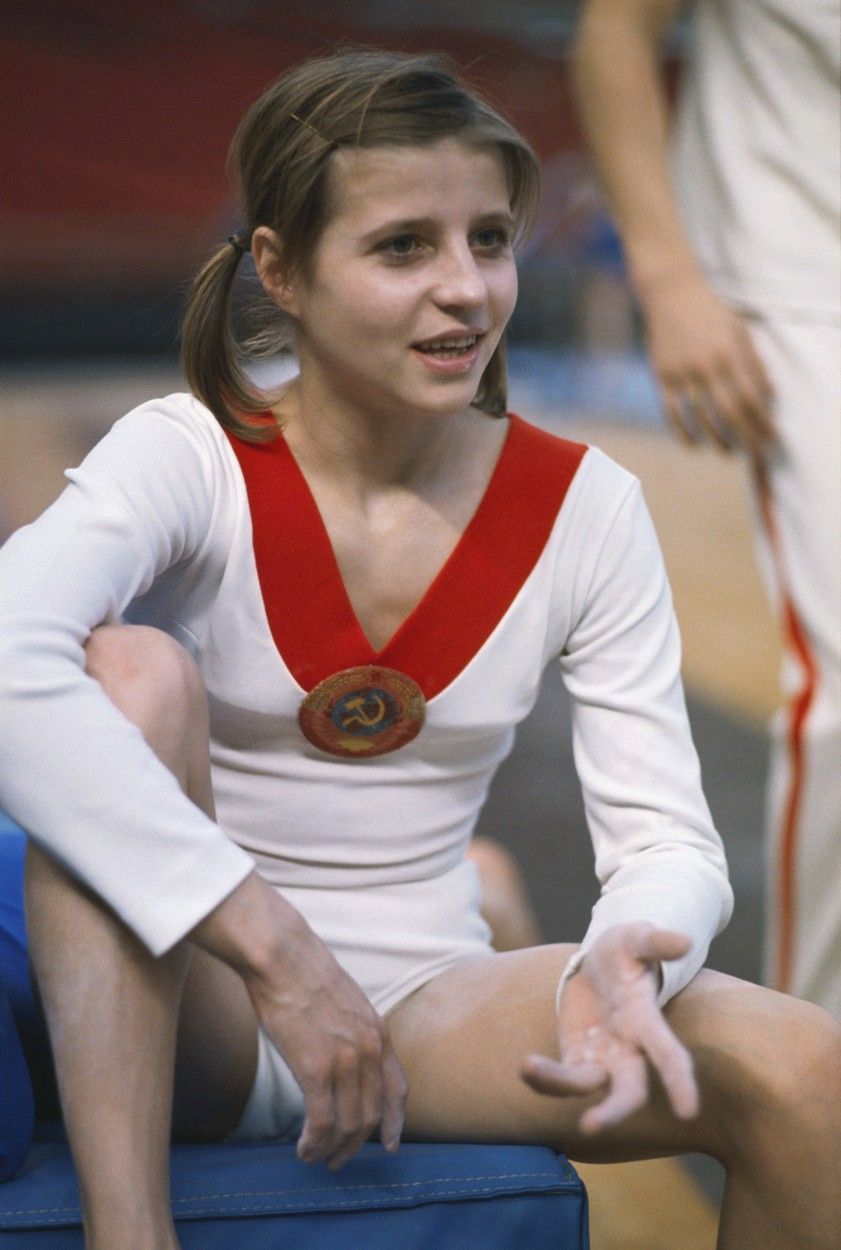

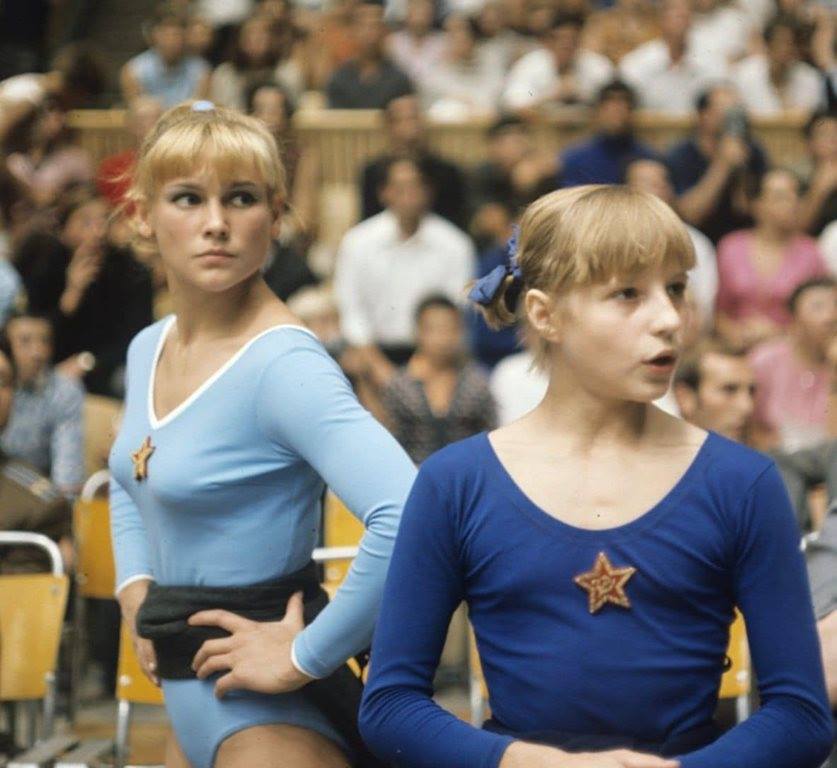
Olga is my favorite. Thank you for featuring her in this article. Beautiful photos, some of which I had not seen before. Natalia Frolova’s Sinfornio per un Addio is often cited as the best floor exercise of the Soviet system, I agree and would love to see photos of Frolova and discussion of this desperate prayer routine and why it is a favorite.
LikeLike
Also it is important to note the influence of a very young Karin Janz appearing in Mexico 68, in the path of Korbut´s Soviet choice.
LikeLike